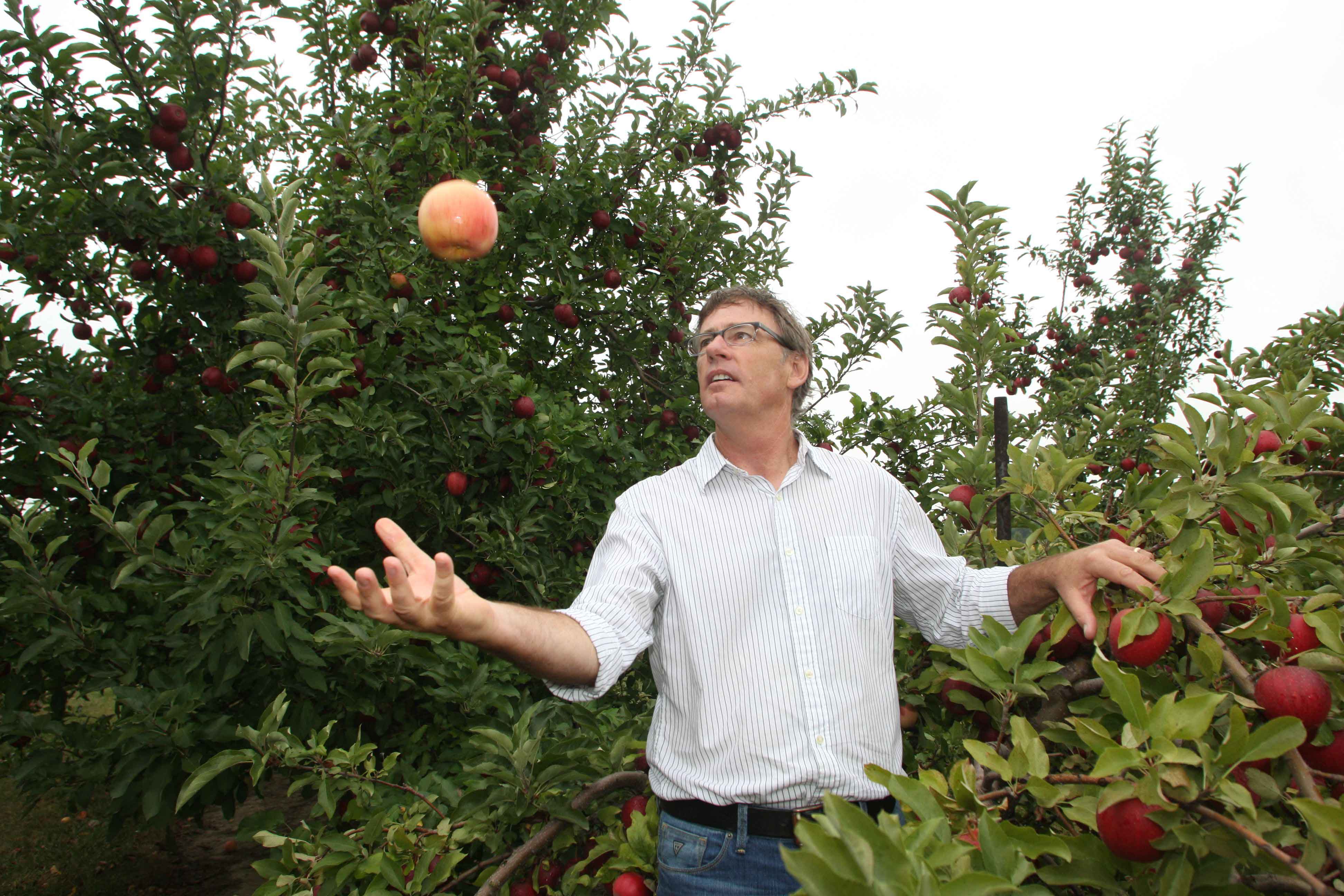It’s Autumn in Indiana, Time to Enjoy Apples!
 Have you visited an orchard lately? Local orchards may offer fun activities, gift shops, and of course – fresh apples and apple products. It may also be an opportunity for memorable family outings.
Have you visited an orchard lately? Local orchards may offer fun activities, gift shops, and of course – fresh apples and apple products. It may also be an opportunity for memorable family outings.
Because of their personal love for apples, many homeowners have installed “backyard” orchards. Many with home orchards in recent years have wisely planted apple trees with dwarfing rootstocks. As the name implies, a dwarfing rootstock causes the apple tree to remain fairly small. This allows for easier care and easier picking, mostly without a ladder.
However, growing a home orchard is not usually successful without a fair amount of work. Pest management, pruning and overall care will involve strategic thinking and action throughout the year to produce the crop you desire. Purdue Extension and other land-grant universities have resources that can help with these issues.
For the home fruit grower, Purdue Extension’s Apple Cultivars for Indiana recommends Gold Rush, Enterprise, Redfree, Prima, Jonafree, Priscilla, and Sir Prize as suggested varieties because they are immune to apple scab and moderately resistant to fire blight and powdery mildew, diseases of concern with apples.
The most popular varieties in Indiana are Red Delicious, Golden Delicious, Jonathan, Gala, Rome and Fuji, but many other varieties are available.
Individuals obviously have different tastes in fresh apples. Some descriptors of taste and texture include tart, tangy, sweet, bland, firm, juicy, crisp, crunchy and granular. Michigan Apple Committee has a nice website describing the characteristics of many of the popular apple varieties we also enjoy here in Indiana at: http://www.michiganapples.com/.
Purdue Extension’s publication, Let’s Preserve: Apples, lists suggested apple varieties for various apple products and preservation methods:
- For freezing, select apple varieties that are crisp and firm and not mealy textured. Some examples of good freezing apples include Golden Delicious, Rome Beauty, Jonathan, York Imperial, and Granny Smith.
- Good canning apples include Jonathan, Golden Delicious, McIntosh, Braeburn, Crispin, York Imperial and others.
- For applesauce, select varieties that are sweet, juicy and crisp, such as Golden Delicious, Rome Beauty, Jonathan, Fuji, York Imperial and McIntosh. For a tart flavor, add 1 to 2 pounds of tart apples to every 3 pounds of sweeter fruit.
Some people may have a cider press to make their own apple cider. Dr. Peter Hirst, professor of horticulture at Purdue, offered advice on apple cider. “The best quality ciders are typically made by blending different varieties of apples,” he said. “You may have some sweet apples, and some tart apples, and some for aroma, and maybe a few for astringency, and…when you blend them together it makes a very full-bodied, delicious cider.” Cider makers use good quality apples, and give much thought to the blend of apples used. He added that one exception to blending is perhaps the variety Gold Rush, bred at Purdue. “It has high sugar and high acid, and so using Gold Rush you can make very good quality cider from just one variety.”
When buying apples, buy only good quality fruit, free of bruises, cuts, and decay. And, when making apple-based products at home, be sure to follow best practices for food safety and food preservation.
For more information, search for publications on apples, managing pests in home fruit plantings, and apple preservation at Purdue Extension’s Education Store: www.edustore.purdue.edu.
To stay informed on fruit growing issues throughout the season, see Purdue Extension’s Facts for Fancy Fruit newsletter, at https://fff.hort.purdue.edu/.
Photo: Dr. Peter Hirst with apples; Purdue University
